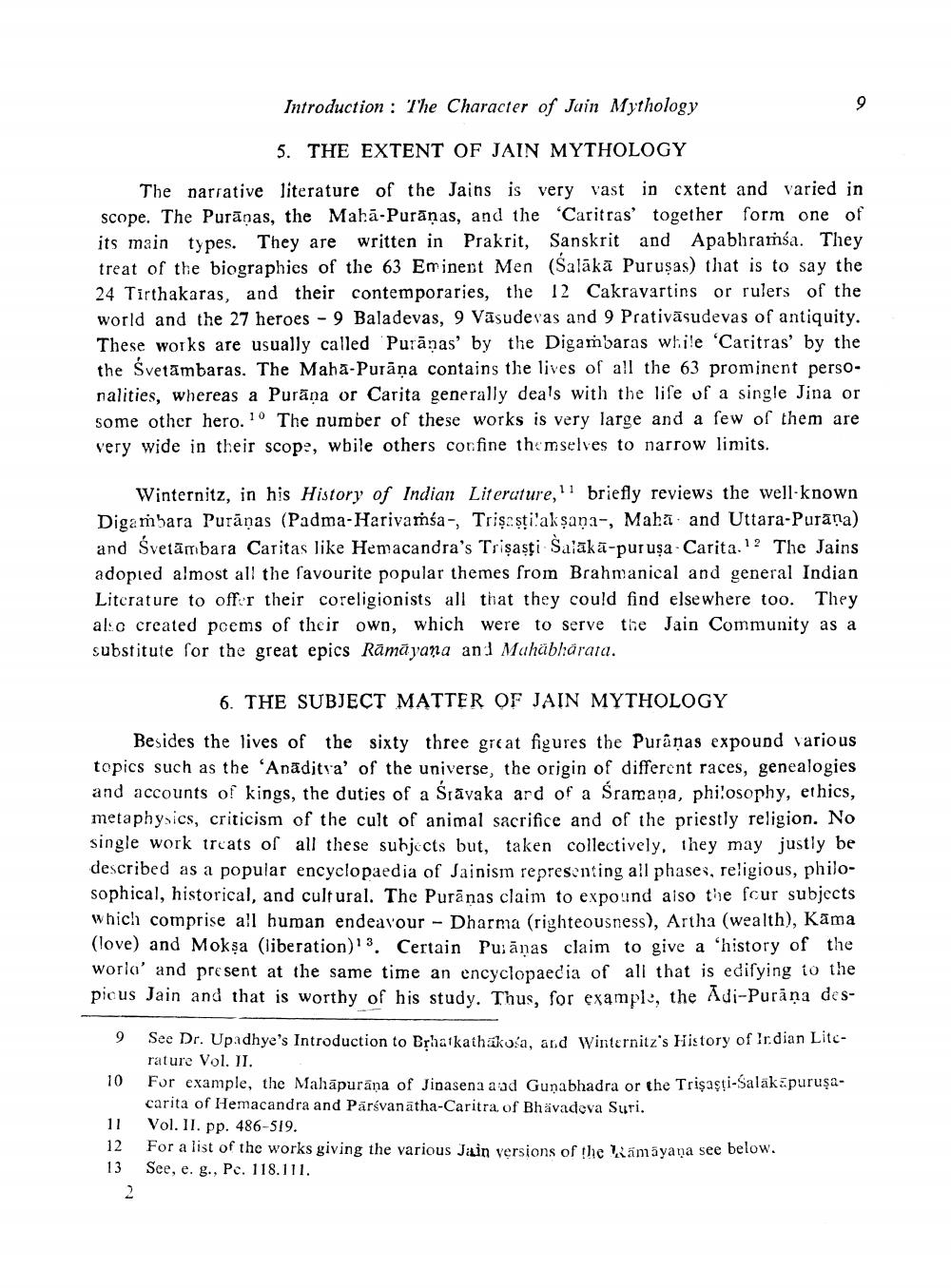________________
Introduction: The Character of Juin Mythology
5. THE EXTENT OF JAIN MYTHOLOGY
The narrative literature of the Jains is very vast in extent and varied in scope. The Purapas, the Maha-Puranas, and the 'Caritras' together form one of its main types. They are written in Prakrit, Sanskrit and Apabhramśa. They treat of the biographies of the 63 Eminent Men (Salaka Purusas) that is to say the 24 Tirthakaras, and their contemporaries, the 12 Cakravartins or rulers of the world and the 27 heroes 9 Baladevas, 9 Vasudevas and 9 Prativasudevas of antiquity. These works are usually called Puranas' by the Digambaras while 'Caritras' by the the Svetambaras. The Maha-Purana contains the lives of all the 63 prominent personalities, whereas a Purana or Carita generally deals with the life of a single Jina or some other hero. 10 The number of these works is very large and a few of them are very wide in their scope, while others confine themselves to narrow limits.
Winternitz, in his History of Indian Literature, briefly reviews the well-known Digambara Purapas (Padma-Harivathśa-, Trisestilaksana-, Maha and Uttara-Purana) and Svetämbara Caritas like Hemacandra's Trişaşți Šalaka-purusa Carita. 12 The Jains adopted almost all the favourite popular themes from Brahmanical and general Indian Literature to offer their coreligionists all that they could find elsewhere too. They also created poems of their own, which were to serve the Jain Community as a substitute for the great epics Ramayana and Mahabharata.
6. THE SUBJECT MATTER OF JAIN MYTHOLOGY
Besides the lives of the sixty three great figures the Puranas expound various topics such as the 'Anaditva' of the universe, the origin of different races, genealogies. and accounts of kings, the duties of a Sravaka ard of a Śramana, philosophy, ethics, metaphysics, criticism of the cult of animal sacrifice and of the priestly religion. No single work treats of all these subjects but, taken collectively, they may justly be described as a popular encyclopaedia of Jainism representing all phases, religious, philosophical, historical, and cultural. The Puranas claim to expound also the four subjects which comprise all human endeavour - Dharma (righteousness), Artha (wealth), Kama (love) and Mokṣa (liberation). Certain Puanas claim to give a 'history of the world' and present at the same time an encyclopaedia of all that is edifying to the picus Jain and that is worthy of his study. Thus, for example, the Adi-Purana des
9
10
11
12
13
2
9
See Dr. Upadhye's Introduction to Bṛhatkathakola, and Winternitz's History of Indian Literature Vol. II.
For example, the Mahapurana of Jinasena aad Gunabhadra or the Trişaşti-Salakāpuruşacarita of Hemacandra and Parsvanatha-Caritra, of Bhävadeva Suri.
Vol. II. pp. 486-519.
For a list of the works giving the various Jain versions of the amayana see below.
See, e. g., Pc. 118.111.




